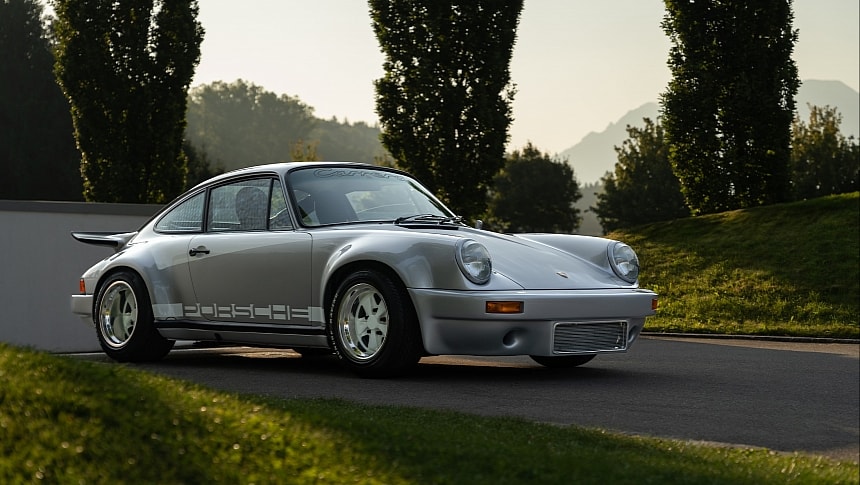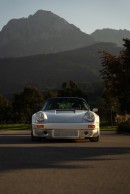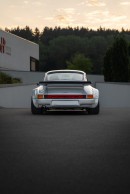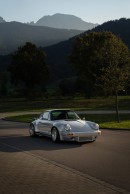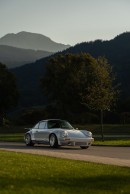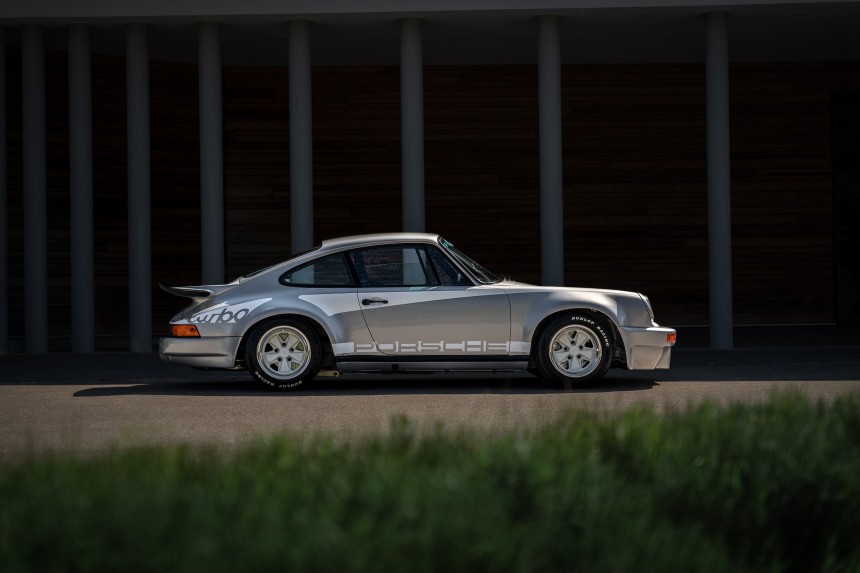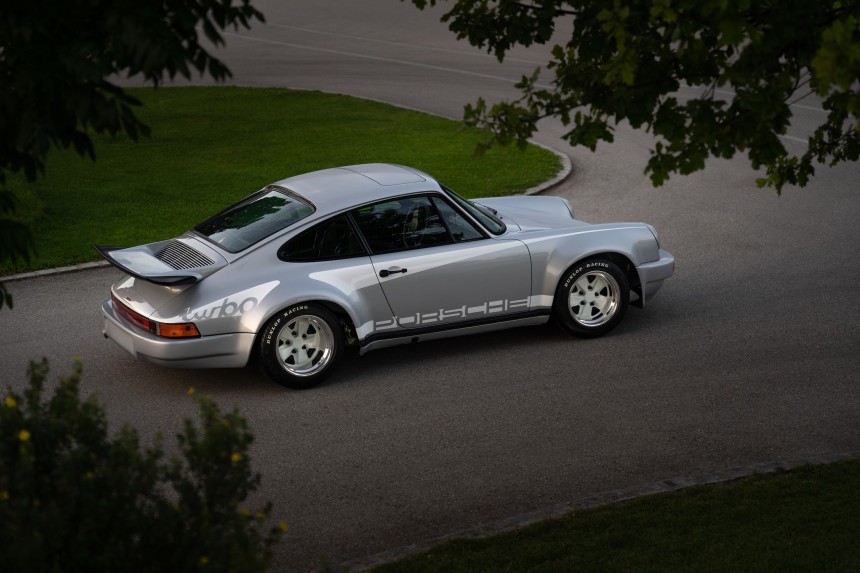This car is the first page of a major chapter in the automotive history. It is the first-ever Porsche 911 to bear the Turbo tag. The model will show up in all its glory at the Concours d'Elegance at Hampton Court Palace this summer, the first to take place in Europe in 2024.
The model saw the light of day in 1973 as a show car, and it was presented that year at the Frankfurt Motor Show. Little did the Porsche engineers know that it was the beginning of an era. One year later, Porsche took to Paris, for the motor show, the 911 Turbo 3.0.
It was this high-performance sports car that came with a 3.0-liter engine that delivered 256 horsepower (260 metric horsepower). That was enough for a top speed of 155 mph (250 kph). Those were the figures that made it Germany's fastest road sports car. And it stayed in the lead for quite a long time.
It took a lot of courage for Porsche to make the move. The first turbocharged engines powering street cars had a very short life. The Chevrolet Corsair Monza and the Oldsmobile Jetfire tested the waters in the early 1960. But they failed to impress. The so-called turbo lag and the size and weight of the turbochargers complicated things.
Furthermore, the massive amount of power pumped out by the turbocharger reduced engine reliability and made the cars difficult to keep on the road. Back then, it was believed that a turbocharged engine just could not be "tamed." It was the wrong engine at the wrong time before Porsche made the bold step.
It enabled pressure to build up even at low engine speeds for higher torque. Internally vented disc brakes with aluminum brake calipers behind the wheels, which had proven their worth in the Porsche 917 race car, were also added to the first-ever street-legal turbo Porsche.
The 911 Turbo 3.0 went into production in the spring of 1975. The 911 Turbo 3.3 followed in 1977. Porsche managed to squeeze an impressive 296 horsepower (300 metric horsepower) out of the power plant, thanks to a larger charge air-cooled engine. The 930 Porsche cars are still icons in the sports car segment today.
Porsche came up with a Targa version and a Convertible in 1987. It was the first time they showed up in the lineup, joining the already available Coupe.
Porsche halted production in 1990 only to make room for a new 911 Turbo, which launched as a coupe in 1991. Based on the Type 964 911, it came with the 3.3-liter engine, but this time, the unit was capable of pumping out 315 horsepower (320 metric horsepower).
The setup made the car accelerate from 0 to 62 mph (0 to 100 kph) in 4.5 seconds. The needle of the speedometer went all the way to 180 mph (290 kph). The car had all-wheel drive, carried over from the 911 Carrera 4.
The years 2000s brought even more power. In February 2000, Porsche unveiled what it called "the world's cleanest car." While bumping output, the engineers reduced fuel consumption through a four-valve technology, water cooling and the first-ever use of the VarioCam Plus.
The model kept the all-wheel drive and the biturbo layout for a total output of 414 horsepower (420 metric horsepower). The Type 996 model did 0 to 62 mph in 4.2 seconds and hit a top speed of 190 mph (305 kph).
The sixth generation arrived in February 2006. It sported a turbocharger with variable turbine geometry for a massive 473 horsepower (480 metric horsepower). It had a new electronically controlled all-wheel drive and the new automatic Tiptronic S transmission. Equipped like that, the 911 Turbo could flash from 0 to 62 mph in just 3.7 seconds, which made 0.2 quicker than the version with manual transmission. Top speed for both was 193 mph (310 kph).
Porsche introduced the first 911 Turbo with rear-wheel steering and active aerodynamics, plus 20-inch wheels and PDCC active roll companion. Those came in the company of 514 horsepower (520 metric horsepower) in the 911 Turbo or 553 horsepower (560 metric horsepower) in the range-topping 911 Turbo S.
And there was surely room for more. The current biturbo Porsche 911 comes with 572 horsepower. Meanwhile, the S version is a 640-horsepower (650-metric horsepower) affair. When equipped with the Sport Chrono Package, the top-of-the-line 911 does 0 to 62 mph in just 2.7 seconds.
Going back to origins, the first-ever Porsche 911 Turbo which only rocked 256 horsepower and was so proud of it, will be on display at the Concours d’Elegance at Hampton Court Palace. The original prototype from almost 50 years ago, chassis number 9113300157, will be there from August 30 to September 1.
That particular car was purchased by racing driver Alan Hamilton in 1975 and it was exported to Australia. Over the coming decades, it graced the collections of several Australian connoisseurs. The car set wheels on American soil for the first time in 2010. After six years in the States, it was purchased by its current owner, and it returned to Europe, looking just like it did in 1973.
It was this high-performance sports car that came with a 3.0-liter engine that delivered 256 horsepower (260 metric horsepower). That was enough for a top speed of 155 mph (250 kph). Those were the figures that made it Germany's fastest road sports car. And it stayed in the lead for quite a long time.
It took a lot of courage for Porsche to make the move. The first turbocharged engines powering street cars had a very short life. The Chevrolet Corsair Monza and the Oldsmobile Jetfire tested the waters in the early 1960. But they failed to impress. The so-called turbo lag and the size and weight of the turbochargers complicated things.
The Porsche engineers had the silver bullet
The engineers somehow found a way out. They used an exhaust bypass valve to make the engine deliver the power and torque smoothly at low engine speeds. The system was quite complex and it had only be used in motor racing, where turbocharged engines were not out of the ordinary.It enabled pressure to build up even at low engine speeds for higher torque. Internally vented disc brakes with aluminum brake calipers behind the wheels, which had proven their worth in the Porsche 917 race car, were also added to the first-ever street-legal turbo Porsche.
The 911 Turbo 3.0 went into production in the spring of 1975. The 911 Turbo 3.3 followed in 1977. Porsche managed to squeeze an impressive 296 horsepower (300 metric horsepower) out of the power plant, thanks to a larger charge air-cooled engine. The 930 Porsche cars are still icons in the sports car segment today.
Porsche came up with a Targa version and a Convertible in 1987. It was the first time they showed up in the lineup, joining the already available Coupe.
Porsche halted production in 1990 only to make room for a new 911 Turbo, which launched as a coupe in 1991. Based on the Type 964 911, it came with the 3.3-liter engine, but this time, the unit was capable of pumping out 315 horsepower (320 metric horsepower).
The only way for the horsepower is up
And for those numbers, the only way was up. In 1995, Porsche rolled out the 993 generation with 402 horsepower (408 metric horsepower), provided by a 3.6-liter unit with two turbochargers.The setup made the car accelerate from 0 to 62 mph (0 to 100 kph) in 4.5 seconds. The needle of the speedometer went all the way to 180 mph (290 kph). The car had all-wheel drive, carried over from the 911 Carrera 4.
The years 2000s brought even more power. In February 2000, Porsche unveiled what it called "the world's cleanest car." While bumping output, the engineers reduced fuel consumption through a four-valve technology, water cooling and the first-ever use of the VarioCam Plus.
The model kept the all-wheel drive and the biturbo layout for a total output of 414 horsepower (420 metric horsepower). The Type 996 model did 0 to 62 mph in 4.2 seconds and hit a top speed of 190 mph (305 kph).
The sixth generation arrived in February 2006. It sported a turbocharger with variable turbine geometry for a massive 473 horsepower (480 metric horsepower). It had a new electronically controlled all-wheel drive and the new automatic Tiptronic S transmission. Equipped like that, the 911 Turbo could flash from 0 to 62 mph in just 3.7 seconds, which made 0.2 quicker than the version with manual transmission. Top speed for both was 193 mph (310 kph).
The Porsche 911 Turbo hit the 500-horsepower milestone
2010 brought a brand-new six-cylinder turbo engine, designed from scratch, featuring direct injection. It was more powerful, more dynamic, lighter, and more efficient. It was a 3.8-liter with 511 horsepower (500 metric horsepower). Porsche also brought the dual-clutch PDK to the lineup.Porsche introduced the first 911 Turbo with rear-wheel steering and active aerodynamics, plus 20-inch wheels and PDCC active roll companion. Those came in the company of 514 horsepower (520 metric horsepower) in the 911 Turbo or 553 horsepower (560 metric horsepower) in the range-topping 911 Turbo S.
And there was surely room for more. The current biturbo Porsche 911 comes with 572 horsepower. Meanwhile, the S version is a 640-horsepower (650-metric horsepower) affair. When equipped with the Sport Chrono Package, the top-of-the-line 911 does 0 to 62 mph in just 2.7 seconds.
That particular car was purchased by racing driver Alan Hamilton in 1975 and it was exported to Australia. Over the coming decades, it graced the collections of several Australian connoisseurs. The car set wheels on American soil for the first time in 2010. After six years in the States, it was purchased by its current owner, and it returned to Europe, looking just like it did in 1973.
